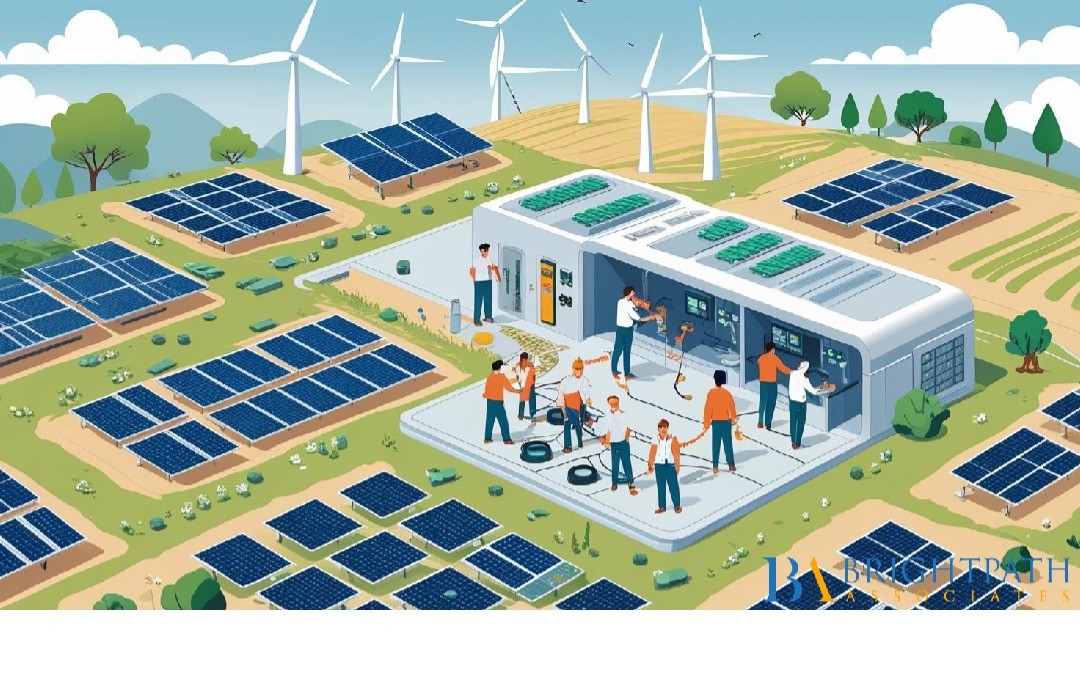Introduction
Microgrids have emerged as pivotal components in the quest for #EnergySustainability within communities. A microgrid is a localized energy system capable of operating independently or in conjunction with the primary grid, facilitating efficient energy management at a community level. This dual functionality not only enhances energy security but also contributes to economic resilience. Notably, the integration of renewable energy innovations, such as solar and wind technology, has played a critical role in advancing microgrid capabilities. These technologies serve as the backbone for many microgrid systems, contributing significantly to the reduction of greenhouse gas emissions and the reliance on fossil fuels. The significance of renewable energy innovation and green technology in optimizing microgrids cannot be overstated, aligning with environmental management systems to ensure sustainable energy solutions are achieved while providing a roadmap for future energy independence.
Understanding Microgrids
Microgrids differ from #TraditionalEnergySystems in their ability to operate autonomously, offering flexibility and reliability in power supply. This autonomy allows communities to tailor their energy consumption and production to fit local needs, reducing energy waste and increasing efficiency. By integrating renewable energy technology, microgrids not only support the transition towards clean energy but also reinforce energy independence. Moreover, they often incorporate advanced environmental management systems that align with environmental regulations. This compliance with regulations is paramount in microgrid planning, ensuring not only ecological balance but also adherence to evolving standards in the renewable energy sector. It is essential for communities to remain informed about the changing regulations to avoid penalties and capitalize on potential incentives for using clean technologies.
The Role of Renewable Energy Technology
The integration of diverse #RenewableEnergyTechnologies, such as solar and wind, into microgrids represents a significant stride towards sustainable energy solutions. The wind energy industry, in particular, has showcased immense potential in powering microgrid systems. This potential is amplified by advancements in turbine design and efficiency, allowing communities to harness wind energy more effectively and economically. As renewable energy economics increasingly favor the adoption of these technologies, the financial viability of microgrids improves. Furthermore, as these technologies evolve, communities are presented with opportunities to leverage these advancements, maximizing their energy efficiency and sustainability. For example, the coupling of energy storage solutions with renewable sources allows for increased reliability, providing consistent power even during low production periods.
Industry Trends and Dynamics
The renewable energy sector is witnessing profound shifts, driven by sustainable energy solutions and the increasing demand for clean energy. Innovations in energy management and battery storage technology are transforming how communities view and utilize energy. Notably, the clean energy executive search is becoming more prevalent, reflecting a growing demand for professionals in the renewable energy jobs market. This need arises due to the multifaceted demands of developing, managing, and scaling renewable energy solutions. Organizations like Brightpath Associates have commented on these industry trends, emphasizing the necessity for targeted recruitment strategies amid evolving market dynamics. As renewable energy becomes a focal point of economic and environmental discussion, attracting talent with the necessary expertise will be critical for the successful implementation of microgrid projects.
Planning and Implementation
Effective #MicrogridPlanning requires a tailored approach, one that considers the unique needs and energy demands of a community. This involves not just strategic planning but also an inclusive stakeholder engagement process to ensure that the voices of all affected parties are heard. By leveraging executive search recruitment to address leadership talent shortages, communities can ensure that they have the right individuals to guide these complex initiatives. Recruitment challenges can significantly impact the success of renewable energy projects. Therefore, having the right leadership in place is crucial for navigating these complexities. The strategic importance of addressing leadership gaps is underscored by data-backed insights that highlight the crucial role executive search recruitment plays in this landscape. Furthermore, ongoing training and development of existing staff can complement #RecruitmentEfforts, fostering innovation and adaptability within the community’s energy workforce.
Challenges and Opportunities
Despite the promising advancements in microgrid technology, communities often face significant challenges in planning and implementation. Regulatory hurdles, such as permitting processes and interconnection agreements, can delay project timelines and increase costs. Financial constraints, particularly in smaller or less economically robust communities, pose additional barriers that require innovative solutions and #RobustPlanning. However, these challenges present unique opportunities for the advancement of green technology and community-driven solutions. Collaborative efforts can be directed towards finding innovative pathways for progress, such as public-private partnerships that pool resources and expertise. Moreover, community engagement and education programs can empower residents to take ownership of their energy future, fostering a culture of sustainability. In this context, #ExecutiveSearchRecruitment emerges as a strategic tool, enabling organizations to bring on board leaders capable of steering the course through these challenges while inspiring collective action toward a sustainable energy future.
Conclusion
Microgrids represent a transformative approach to sustainable energy solutions, offering communities the tools to harness renewable energy technology effectively. By understanding the interplay between renewable energy technology, environmental regulations, and strategic executive search recruitment, communities and C-suite executives can collaboratively shape the future of microgrid development. Engaging proactively in microgrid planning will not only benefit community energy resilience but will also pave the way for an economically and environmentally sustainable future. A commitment to ongoing innovation, education, and collaboration will serve as the foundation for successfully navigating the complexities of the energy landscape, enabling communities to thrive in an era that prioritizes sustainability and resilience. The successful integration of microgrids into community energy systems will ultimately serve as a model for other regions to follow, demonstrating the potential for localized solutions to address global energy challenges.
Find your next leadership role in Renewable & Environmental Services Industry today!
Stay informed with the latest insights on Renewable & Environmental Services Industry!

